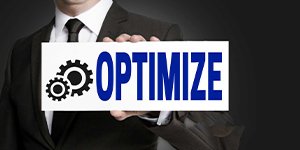How to Create a Performance-Driven Culture at Work
In today's competitive and fast-paced business world, success is strongly reliant on organizations' ability to establish a performance driven culture. Companies that promote performance as a core value see increased productivity, employee engagement and profitability. But how to create a performance-driven culture that is durable motivating and aligned with strategic objectives? This article investigates effective tactics, and the crucial components required to establish a performance-based work culture that produces consistent results.
 |
Understanding Performance-Driven CultureOrganizational environments that prioritize excellence, responsibility and outcomes in their day-to-day operations, are known as performance driven cultures. With well-defined goals, frequent feedback, complementary rewards workers in a performance-oriented culture are encouraged to give their all. |
A performance-based work culture places a premium on contributions and results rather than traditional ideals like tenure or hierarchy. A high-performance workplace culture is the product of an atmosphere that encourages creativity quick thinking and constant development.
Benefits of a Performance-Based Work Culture
Creating a performance driven culture provides several benefits of a performance-based work culture to both people and the firm. Some major advantages include:
- Enhanced Productivity: A focus on results pushes people to perform more efficiently and effectively.
- Improved Accountability: Clear performance measures guarantee, that everyone understands what success looks like.
- Employee Engagement: In a strong employee performance culture, team members are more engaged since their contributions are acknowledged and rewarded.
- Better Decision-Making: By focusing on performance data decisions are made based on results rather than preconceptions.
- Competitive Advantage: A results-driven company culture can respond swiftly to market needs by leveraging innovation and performance analytics.
Understanding these benefits is the first step toward building a performance-driven culture that will ensure long-term organizational success.
Key Elements of a Performance-Oriented Culture
Companies must pay attention to a few key areas in order to create a performance-oriented culture:
1. Clear Vision and Goals
Employees need to know how what they do fits into the bigger goal of the company. Setting clear goals that are connected to a bigger goal helps people work together and stay on track. A performance based work culture is more likely to be maintained when teams can see how their individual work affects the business.
2. Transparent Metrics and KPIs
It's great to have data in a performance driven culture. It is important to clearly describe, share and consistently keep track of key performance indicators (KPIs). This openness builds trust and makes it easier to see who is doing a good job and who needs work.
3. Ongoing Feedback and Recognition
A employee performance culture success needs regular feedback loops to work well. Managers should give comments on time, celebrate wins, and help workers through tough situations. Recognizing good behavior makes it more likely to happen and improves the organizational performance strategy.
4. Merit-Based Rewards
A performance based work culture doesn't care about status or office politics; it only cares about results. Opportunities, promotions, and pay raises should all be tied to results that are clear and easy to measure. For everyone to be able to progress equally, this keeps people motivated.
How to Create a Performance-Driven Culture
In real life, how to create a performance driven culture in a practical sense? It starts with leadership's intention and commitment, and then everyone in the group does the same thing. Here are the steps you need to take:
1. Gain Leadership Buy-In
A performance driven culture that works starts at the top. Leaders need to show others how to act and what they expect from them. Ieadership’s role in a performance-driven organization, is very important. They set goals, make sure strategies are aligned, and reinforce performance values every day.
2. Communicate the Culture Shift
People who work for the company need to know "why" the culture is changing. Tell people what a performance based work culture can do for them and how it can help them grow as people and as professionals. Being open about the change builds trust and makes pushback less likely.
3. Align Organizational Structures
Make sure that all of your systems—for hiring, training, promotions, and reviews of your work—are in line with a mindset that performance-oriented culture. For instance, job titles should make it clear what kind of work is expected, and reviews should focus on results rather than just effort.
4. Empower Managers
Middle management is what makes a high-performance workplace culture. Give managers the power, training, and tools they need to set goals, give feedback, and hold teams responsible. Even the best organizational performance strategy can fail if the management isn't strong.
5. Foster a Growth Mindset
Encourage people to learn and be strong. It's not just about results in a performance driven culture; it's also about growth. Workers should be told to try new things, learn from their mistakes, and always get better. This way of thinking leads to new ideas and high standards.
6. Celebrate Results
A results-driven company culture must recognize and reward accomplishments. Public praise, bonuses, and job advancement based on performance levels encourage people to keep doing their best and support cultural values.
Leadership’s Role in a Performance-Driven Organization
Leadership’s role in a performance-driven organization is critical. Leaders must be cultural advocates exemplifying the ideals they aim to instill. They must:
- Lead with clarity and purpose.
- Set performance benchmarks.
- Provide consistent coaching.
- Encourage honesty and justice.
- Encourage a culture of accountability and ownership.
By displaying a strong commitment to the performance driven culture, leadership fosters an environment in which great performance is not only expected but also celebrated.
Challenges in Building a Performance-Driven Culture
Building a performance-driven culture isn't easy, even though it has benefits:
- Resistance to Change: Some people may find it hard to change their minds when they have to go from a performance based work culture one.
- Unclear Metrics: If KPIs aren't clear, success can become subjective and lose motivation.
- Lack of Consistency: If leaders don't impose fair standards, the employee performance culture success can break down, which can hurt trust.
These problems can be lessened by being strategic about communication, training, and execution.
Sustaining a High-Performance Workplace Culture
It takes time and effort to build a performance-driven culture. It needs to be worked on, improved, and reinforced all the time. To keep a high-performance workplace culture, do the following:
- Culture audits should be done on a regular basis to see how well the culture fits with strategic goals.
- Feedback from Employees: To find out what your team wants, use surveys and listening sessions.
- Leadership Development: Keep putting money into leaders who will keep the performance-oriented culture going and make it better.
- Changes Based on Data: Let performance analytics help you make changes to policies and procedures.
A truly results-driven company culture is dynamic. It changes, grows, and adapts to meet the needs of its people and the needs of the market.
Conclusion
Any company can benefit from having a strong performance driven culture. It encourages new ideas, gives workers more power, and speeds up growth. Companies can build a high-performance workplace culture that leads to long-term success by focusing leadership, strategy, and processes on performance.
Keep in mind that how to create a performance driven culture is not through a single program or effort, but by making performance a part of the organization's very nature. Every part of the business must support the values of a performance based work culture. This includes open communication, clear goals, strong leadership, and ongoing training.
Companies can get the most out of their employee performance culture of success that gets results by being committed and consistent.
Read More: Benefits of Open Communication in the Workplace





